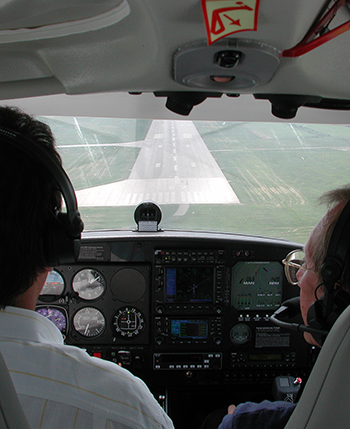Subscriber question:
"When slipping to lose altitude, is it safer to slip to the left or to the right?" — Carol Z.
Bob:
 “Aerodynamically, it doesn’t matter. You’ll lose altitude just as quick in a left or right slip. But that doesn’t mean one way isn’t better than the other.
“Aerodynamically, it doesn’t matter. You’ll lose altitude just as quick in a left or right slip. But that doesn’t mean one way isn’t better than the other.
First, is there a crosswind? If there is, slip with the wing down into the wind. Then you’re already slipping the right way to counter the crosswind. The transition from forward slip to side slip will be simpler and less dramatic.
If there’s no crosswind, you have a choice, and it may come down to personal preference. A slip to the left is often preferred in side-by-side airplanes since it provides better visibility. It also offers a smoother transition from a left base to a slipping final.
Slips might cause the indicated airspeed to be unreliable, especially if you have a static port on only one side of the airplane. And airspeed control in a slip is important. If you don’t lower the nose, the airspeed will decrease. You should know how much to lower the nose and what sight picture is appropriate, even without reference to the airspeed indicator.
To a passenger, a slip can be disorienting, increase anxiety, or even cause motion sickness. They just feel wrong. Rather than make your passengers uncomfortable, maybe go around instead and try again. On the other hand, if you fly something like a Stearman or a Pitts, slipping might be required just to see the runway.
Know your Pilot’s Operating Handbook and any limitations or recommendations regarding slips in your aircraft, and practice slips to perfect your technique.”
How often do you use slips to lose altitude?
